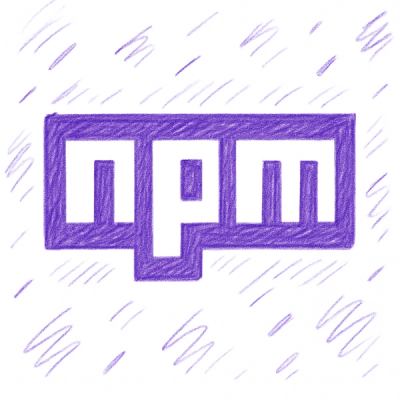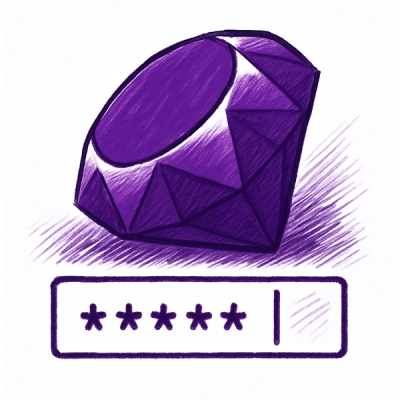
Security News
npm Adopts OIDC for Trusted Publishing in CI/CD Workflows
npm now supports Trusted Publishing with OIDC, enabling secure package publishing directly from CI/CD workflows without relying on long-lived tokens.
Declarative Feature Flagging for your Javascript App

Features:
TOC
Flagg gives you a simple, declarative, and extensible way to add feature flags to your javascript app. Feature flags (also known as feature toggles or configuration management) allow you to handle a variety of development and deployment use cases that are common when working on production grade apps. Some examples:
Flagg accepts a definitions list and one or more storage mechanisms for your feature flags. Any call to get or set will look for the feature flag's name in the specified store and return or set the value. It's a simple concept that can have profound implications on how you build and ship your features.
Install it: npm install flagg or yarn add flagg
import {flagg, inMemoryStore} from 'flagg';
// Create your feature flags
const featureFlags = flagg({
store: inMemoryStore(),
definitions: {
'home_enableV2': {
default: false
},
'developer_debugMode': {
default: process.env.NODE_ENV === 'development'
},
}
});
// Use them!
if (featureFlags.get('home_enableV2')) {
// do something for this feature
}
featureFlags.set('developer_debugMode', true);
Before you dive deeper into the documentation, here are some common scenarios you'll likely come across and how you can accomplish them with Flagg.
sessionStore and then enable the feature via your dev tools by setting sessionStorage.setItem('ff_myNewFeature', true) or by using the Flagg admin panel.import {flagg, sessionStore} from 'flagg';
const featureFlags = flagg({
store: sessionStore(),
definitions: {
'myNewFeature' {default: false}
}
});
localStore and provide a UI for your users to enable the feature.import {flagg, localStore} from 'flagg';
const featureFlags = flagg({
store: localStore(),
definitions: {
'myNewFeature' {default: false}
}
});
// somewhere else in your app
<button onclick="featureFlags.set('myNewFeature', true)">
sessionStore or localStore depending on if you want the flags to persist across browsing sessions.Example Link: https://example.com?ff={"myNewFeature":true}
import {flagg, urlStore, sessionStore} from 'flagg';
const featureFlags = flagg({
store: sessionStore(),
definitions: {
'myNewFeature' {default: false}
}
});
featureFlags.hydrateFrom(urlStore(window.location.search))
import {flagg, inMemoryStore} from 'flagg';
const featureFlags = flagg({
store: inMemoryStore(),
definitions: {
'specialCustomerFeature' {default: false}
}
});
fetch('https://my.customer.configuration')
.then(res => res.json())
.then(res => {
// Assuming res is {"specialCustomerFeature": true}
featureFlags.set(res);
featureFlags.freezeAll();
})
ff_.import {flagg, envStore} from 'flagg';
// Environment variable names cant have dots in them
// Flagg uses an underscore to work around this
process.env['ff_myNewFeature'] = true;
const featureFlags = flagg({
store: envStore(process.env),
definitions: {
'myNewFeature' {default: false}
}
});
There are handful of built in storage mechanisms to support a wide range of use cases.
inMemoryStoreA simple key / value store that will be reset on every refresh.
localStoreSaves feature flag settings to localStorage to persist between tabs and browser restarts. All keys in localStorage will be prefixed with ff_. Browser only.
sessionStoreSaves feature flag settings to sessionStorage which will only live in the current tab and the current browsing session. All keys in sessionStorage will be prefixed with ff_. Browser only.
urlStore: ReadonlyEnables reading feature flag settings from a url search string. Just pass the search string on init. The get paramemter format is the key ff pointing to a uri encoded JSON object.
Example: https://example.com?ff={"home_v2":true}
import {flagg, urlStore} from 'flagg';
const featureFlags = flagg({
store: urlStore(window.location.search),
definitions: {...}
});
envStore: ReadonlyEnables reading feature flag settings from either a client side build's process.env variable or Node's process.env. When setting feature flags in the environment you need to prefix them with ff_.
Example process.env['ff_home_v2']
import {flagg, envStore} from 'flagg';
const featureFlags = flagg({
store: envStore(process.env),
definitions: {...}
});
Don't see one for your usecase? Follow this guide: Writing your own custom store.
You can pass multiple stores to the flagg init function as well as specify what store a particular definition should use. The first store specified is considered the default.
import {flagg, sessionStore, localStore} from 'flagg';
const featureFlags = flagg({
// Enable both the sessionStore and localStore.
// sessionStore is the default
store: [sessionStore(), localStore()],
definitions: {
// Tell this feature flag to use localStore which
// will let it persist between tabs and browser sessions
'home_enableV2': {
default: false,
store: 'localStore'
},
// This feature flag will use the default store
// which is sessionStore
'developer_debugMode': {
default: false
},
}
});
By default, every call to get / set will directly read and write from the specified store. Certain Use Cases such as url or environment based feature flags are more of a "copy on init" than anything else.
For the below example, imagine you want to send an email out with a link to try out the new home experience. The link can contain a feature flag payload, but once the user receives it, you'll want the property to be set in localStorage so that the next time they visit your app, the flag will still be set.
This is exactly what hydrateFrom does for you. It will read all available key / value pairs from the store specified in hydrateFrom and set them on what you have specified in store.
import {flagg, urlStore, localStore} from 'flagg';
const featureFlags = flagg({
store: localStore(),
definitions: {
'home_enableV2': {
default: false
}
}
});
// assuming example url https://example.com?ff={"home_enableV2":true}
featureFlags.hydrateFrom(urlStore(window.location.search))
Using feature flags can have implications for the security of your app (depending on what you have your feature flags actually doing). You should never rely on frontend feature flags alone to lock down your app since client side code can always be tampered with. With that said, it doesn't mean we have to make it easy!
Flagg ships with the ability to freeze feature flags. One they're frozen, they'll be stuck that way until the next browser refresh. The most common scenario that this covers is loading some remote configuration for a customer, setting their flags, and then freezing them. While this may not stave off more advanced attacks,it will absolutely stop the person who knows how to poke around dev tools from settings values to something you don't want them to be. Note that this freezes all calls to set from anywhere, including programatically, the admin, etc.
import {flagg, inMemoryStore} from 'flagg';
const featureFlags = flagg({
store: inMemoryStore(),
definitions: {
'specialCustomerFeature' {default: false},
'anotherFeature' {default: false}
}
});
// freeze an individual
featureFlags.freeze('anotherFeature'); // Freeze it
featureFlags.set('anotherFeature', true); // warning
featureFlags.get('anotherFeature'); // still false
// Example fetching remote config
fetch('https://my.customer.configuration')
.then(res => res.json())
.then(res => {
// Assuming res is {"specialCustomerFeature": true}
featureFlags.set(res);
// freeze everything
featureFlags.freezeAll();
})
Another basic aspect of security is to make sure you don't include the Flagg admin in your production builds. This can be done in a variety of ways, but the simplest is making sure to only enable it when process.env.NODE_ENV === 'development'
Flagg ships with an admin panel (pictured above) for use inside of your app. This is useful in development to pop open and see the entire feature flag surface, as well as make any adjustments you want. It is recommended that you disable this or find ways to secure / hide it on your production apps.
For React: an example embedding the panel at it's own Route, and only in dev mode.
import {FlaggAdmin} from 'flagg/react';
import {Route, Switch} from 'react-router';
function App() {
return (
<Switch>
<Route path="/" render={() => <Home />}>
{process.end.NODE_ENV === 'development' &&
<Route path="/feature-flags" render={() => <FlaggAdmin />}/>
}
</Switch>
)
}
flagg({
/** One or more storage mechanisms for your feature flags. */
store: Store | Store[];
/** Feature flag definitions. */
definitions?: FlagDefinitions;
});
A FlagValue can be any primitive in javascript. A general rule of thumb is that a feature flag needs to be serializeable at all times, so no functions.
type FlagValuePrimitive = string | boolean | number | null | object;
type FlagValue = FlagValuePrimitive | FlagValuePrimitive[];
interface FlagDefinition {
/** An optional description to understand what the feature flag is for. */
description?: string;
/** Specify which store this feature flag should use. */
store?: string;
/** A default value for your feature flag. */
default?: FlagValue;
/** An array of options to present as a dropdown in the admin. */
options?: string[];
}
Most of the time you'll only need to use the set and get methods. The rest of the api surface is useful for higher order tools like the Flagg Admin panel.
const ff = flagg(options);
ff.get('myFlag')
interface FlaggInstance {
/** Gets a value for a feature flag. */
get: (flagName: string) => FlagValue;
/** Sets one or many feature flags. */
set: (flagName: string, value: FlagValue) => void
| ({[flagName: string]: FlagValue}) => void;
/** Get the default value for a feature flag. */
getDefault: (flagName: string) => FlagValue;
/** Checks to see if a feature flag is overridden. */
isOverridden: (flagName: string) => boolean;
/** Allows you to hydrate from one or more stores. See the docs on Stores. */
hydrateFrom: (storesToHydrateFrom: Store | Store[]) => Promise<void>;
/** Set the definitions after init. */
setDefinitions: (definitions: FlagDefinitions) => void;
/** Gets the current set of definitions. */
getDefinitions: () => FlagDefinitions;
/** Gets all feature flags with their resolved value. */
getAllResolved: () => {[flagName: string]: FlagValue};
/** Get only the feature flags that are different than their defaults. */
getAllOverridden: () => {[flagName: string]: FlagValue};
/** Freeze a feature flag to prevent further changes. */
freeze: (flagName: string) => void;
/** Freeze all feature flags. */
freezeAll: () => void;
/** Resets a feature flag to its default value. */
reset: (flagName: string) => void;
/** Reset all feature flags to their default value. */
resetAll: () => void;
/** Check if a feature flag is frozen. */
isFrozen: (flagName: string) => boolean;
}
Please see the documentation on React. React Documentation
Please see the documentation on Typescript. Typescript Documentation
FAQs
Declarative Feature Flagging for your Javascript App
The npm package flagg receives a total of 1,129 weekly downloads. As such, flagg popularity was classified as popular.
We found that flagg demonstrated a not healthy version release cadence and project activity because the last version was released a year ago. It has 1 open source maintainer collaborating on the project.
Did you know?

Socket for GitHub automatically highlights issues in each pull request and monitors the health of all your open source dependencies. Discover the contents of your packages and block harmful activity before you install or update your dependencies.

Security News
npm now supports Trusted Publishing with OIDC, enabling secure package publishing directly from CI/CD workflows without relying on long-lived tokens.

Research
/Security News
A RubyGems malware campaign used 60 malicious packages posing as automation tools to steal credentials from social media and marketing tool users.

Security News
The CNA Scorecard ranks CVE issuers by data completeness, revealing major gaps in patch info and software identifiers across thousands of vulnerabilities.